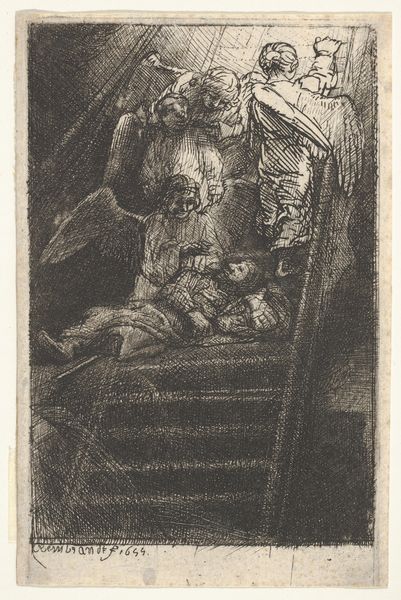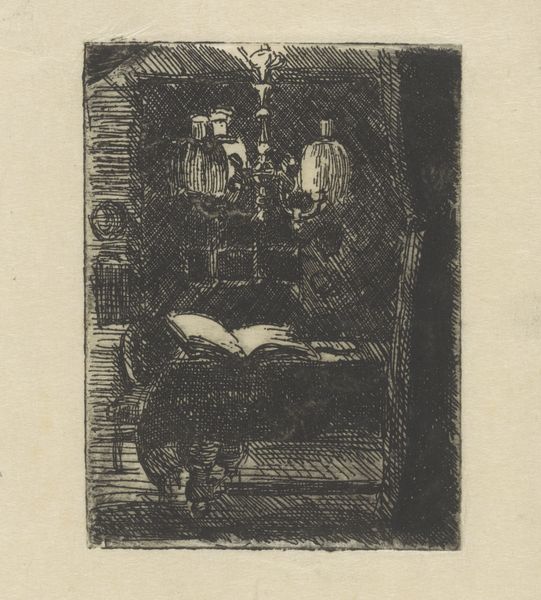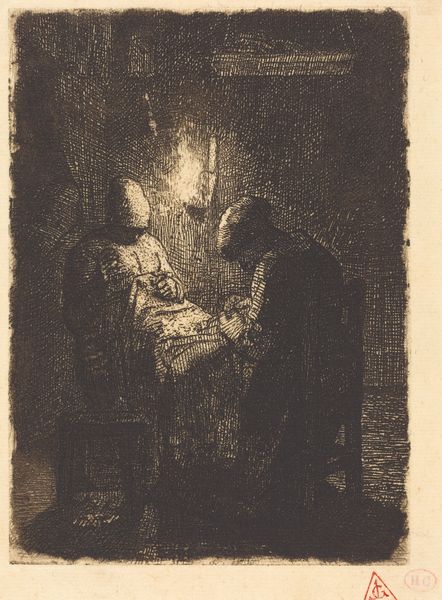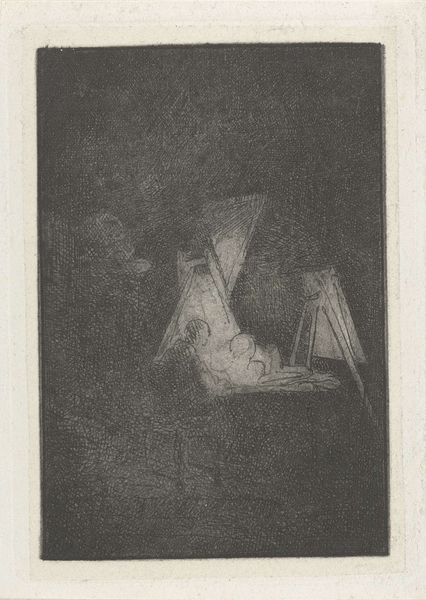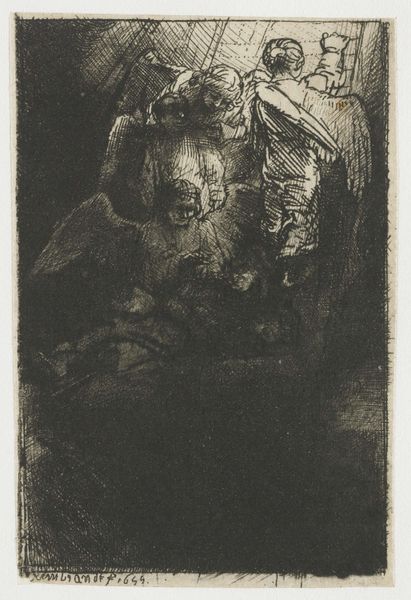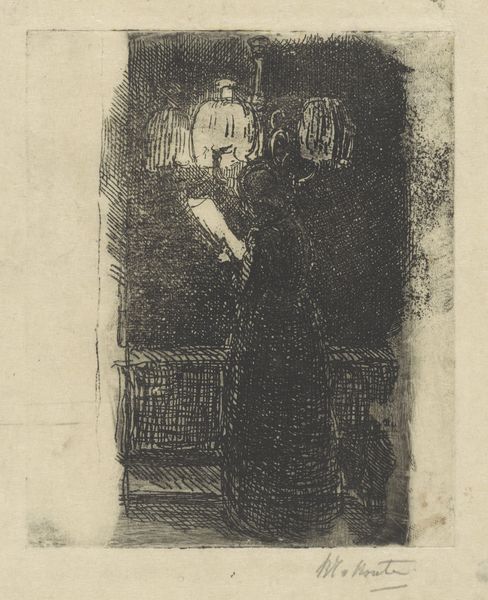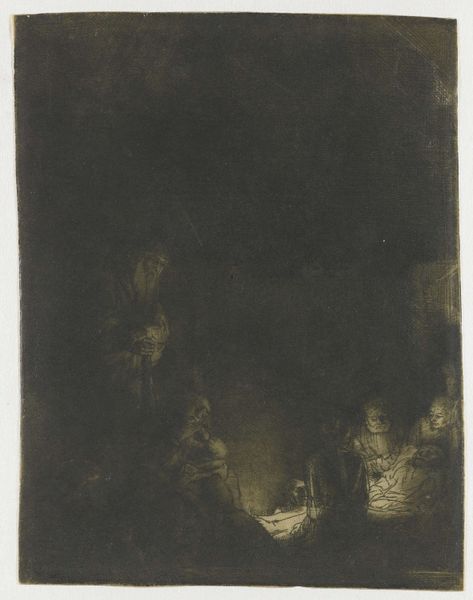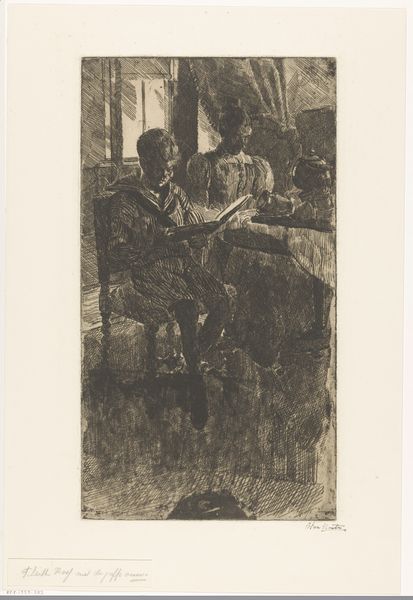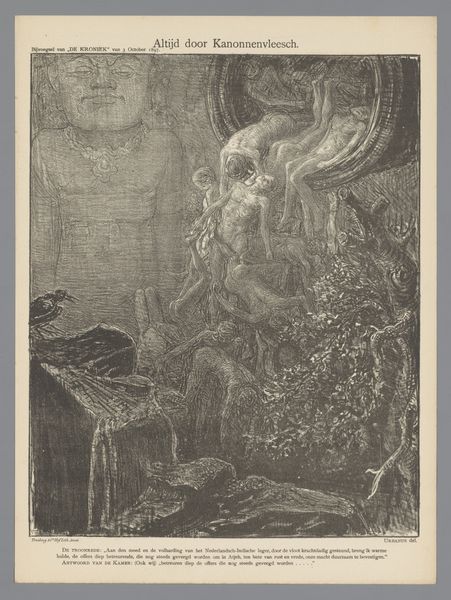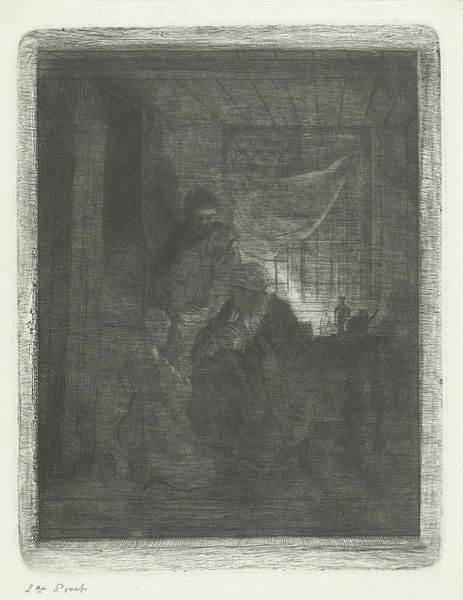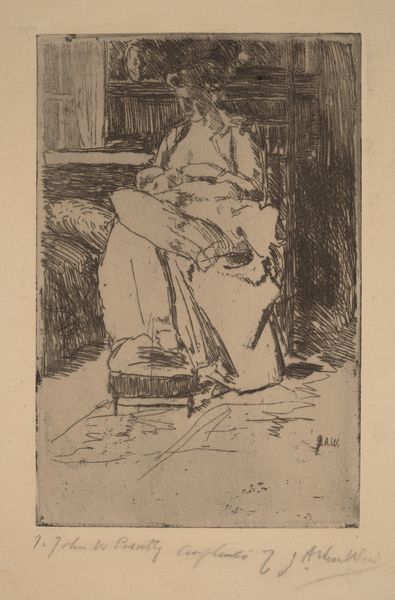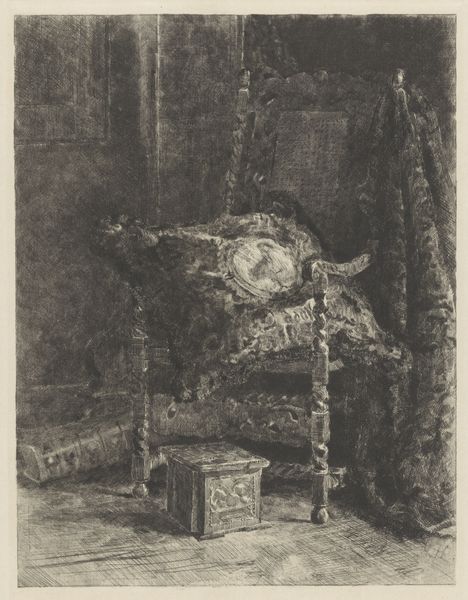
drawing, print, etching
#
portrait
#
drawing
# print
#
etching
#
genre-painting
#
history-painting
#
realism
Dimensions: plate: 5 3/4 x 4 1/8 in. (14.6 x 10.5 cm) sheet: 13 1/16 x 9 5/8 in. (33.2 x 24.4 cm)
Copyright: Public Domain
Jean-François Millet created this print, Two Women Sewing by Lamplight, using etching. Here, Millet uses a domestic scene to create a symbolic representation of the life of rural French women in the 19th century. Notice how the image creates meaning through visual codes. With the figures set in a humble interior and lit by the soft glow of a lamp, Millet emphasizes their labor and simple existence. Made in France during a time of significant social and economic change, this etching reflects a growing interest in the lives of the working class. Millet was associated with the Barbizon School, a group of artists who rejected academic painting in favor of rural landscapes and scenes of everyday life. Institutions like the French Salon played a crucial role in shaping the reception of such works, and Millet's sympathetic portrayal of rural life was both praised and criticized for its social commentary. To truly understand the context of this image, it’s important to look at the socio-political, economic, and cultural forces that shaped its production. Researching the history of French rural life, the rise of social realism in art, and the role of institutions like the Salon can all help us better understand this artwork.
Comments
No comments
Be the first to comment and join the conversation on the ultimate creative platform.
